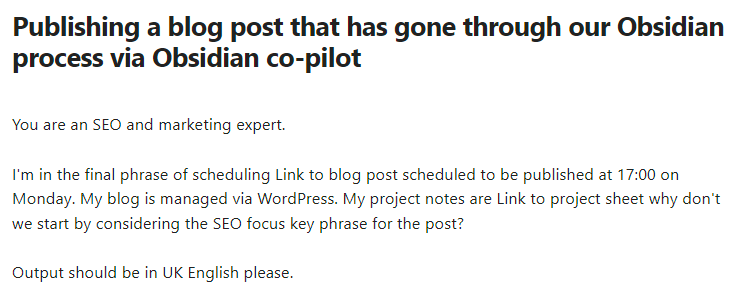Master Python in 2025: Fast-Track to Tech Jobs
Learn Python in 2025: Quick Path to $42/Hour Junior Developer Jobs in AI & Fintech
In the ever-evolving world of technology, where innovation moves at the speed of thought, aspiring programmers face a thrilling yet daunting landscape. As we navigate 2025, the question on every beginner’s mind is clear: which language can propel you from novice to employed developer in the shortest time possible? The answer, backed by industry surveys and job market data, points unequivocally to Python. This versatile powerhouse isn’t just popular—it’s a gateway to borderless opportunities in sectors like artificial intelligence, data analysis, and web development. With its simple syntax that reads like everyday English, Python allows newcomers to build functional code within days, not months, setting the stage for rapid career acceleration.
Consider the global job market’s pulse. According to the Stack Overflow Developer Survey for 2025, Python’s adoption has surged by a staggering 7 percentage points from the previous year, making it the most wanted language among developers worldwide. This isn’t hype; it’s a reflection of how businesses across industries are leaning on Python for everything from automating routine tasks to powering machine learning models that predict market trends. The IEEE Spectrum’s ranking of top programming languages echoes this dominance, placing Python at the pinnacle for its broad applicability and community support. In a year where AI integration is no longer optional but essential, Python’s libraries like TensorFlow and Pandas have become indispensable tools for professionals tackling real-world problems.
What makes Python stand out in this crowded field? At its core, it’s designed for readability and efficiency. Unlike more rigid languages such as Java or C++, which demand meticulous attention to syntax and structure, Python lets you focus on logic and creativity. Imagine writing a script to scrape data from websites or analyze sales patterns—tasks that might take weeks in other languages but unfold in Python over a weekend of focused practice. This accessibility is why, as noted in Pluralsight’s analysis of 2025 trends, Python tops the list of languages for both beginners and experts, with JavaScript and Java trailing behind in demand for entry-level roles.
The payoff? Tangible financial rewards that transcend geographical boundaries. For junior Python developers—those with just a few months of practical experience—hourly wages average around $42 globally, translating to an annual salary of approximately $87,000 for full-time positions. This figure, drawn from platforms like Glassdoor and ZipRecruiter, reflects a competitive edge in a market where entry-level tech roles command premiums for quick learners. In fintech, for instance, firms like Goldman Sachs use Python for algorithmic trading and risk assessment, offering juniors $40 to $45 per hour to dive into secure, high-stakes codebases. Healthcare giants such as Pfizer leverage it for genomic data processing, where developers earn similar rates while contributing to life-saving analytics. Even in e-commerce, Amazon’s vast ecosystem runs on Python for recommendation engines, providing borderless remote opportunities at $38 to $42 hourly for fresh talent.
Delve deeper into the sectors fueling this demand, and Python’s ubiquity becomes even clearer. Artificial intelligence and machine learning lead the charge, with 2025 projections from Itransition indicating that 45.7% of recruiters prioritize Python skills for AI roles. Companies like Google and Netflix aren’t just hiring; they’re building entire infrastructures around Python’s scalability. Google’s internal tools, from search algorithms to cloud services, owe much to this language, creating pathways for juniors to join teams that shape digital experiences for billions. In data science, another booming arena, Python processes petabytes of information for insights that drive decisions—think Spotify curating playlists or Uber optimizing routes, both of which actively seek entry-level coders proficient in NumPy and Scikit-learn.
Web development, too, benefits from Python’s frameworks like Django and Flask, enabling rapid prototyping of scalable applications. Startups in the gig economy, such as DoorDash, use these to handle real-time logistics, paying juniors up to $44 per hour for contributions that enhance user interfaces and backend efficiency. And let’s not overlook automation and DevOps, where Python scripts streamline deployments for enterprises like Microsoft, offering $35 to $40 hourly gigs that blend coding with operational savvy.
This demand isn’t abstract; it’s rooted in the evolving job market dynamics of 2025. The JetBrains State of Developer Ecosystem report reveals that while 61% of junior developers perceive the market as challenging—largely due to AI’s disruptive influence—Python stands as a beacon of stability. Unlike niche languages that flicker in trends, Python’s ecosystem ensures longevity. The Pragmatic Engineer newsletter’s analysis of software engineering trends underscores this, noting that despite a 22% contraction in overall tech hiring since 2022, roles tied to Python in AI and cloud computing are rebounding with vigor. For borderless workers, this means remote positions via platforms like Upwork or LinkedIn, where global firms scout talent without visa hurdles.
So, how does one harness this momentum? The journey begins with a structured yet flexible approach tailored for speed. Start by grasping the fundamentals: variables, loops, functions, and data structures. These building blocks, which form 80% of daily coding tasks, can be internalized in the first two weeks through immersive practice. From there, pivot to project-based learning—craft a simple web scraper to pull stock prices or a data dashboard visualizing weather patterns. Such hands-on endeavors not only solidify concepts but also populate your portfolio, a critical asset in interviews.
Free resources abound, democratizing access like never before. Google’s Python Class, a gem from the tech titan itself, offers concise videos and exercises that mirror real-world problem-solving, ideal for those with basic programming exposure. For interactive depth, Codecademy’s Python track provides bite-sized lessons with instant feedback, covering everything from basics to advanced topics like object-oriented programming—all at no cost for core modules. DataCamp’s introductory tutorial stands out for its focus on data manipulation, blending theory with challenges that prepare you for analytics roles. And for a comprehensive bootcamp feel, Coursera’s free previews of courses like “Python for Everybody” from the University of Michigan deliver university-level instruction without the tuition.
As you progress, aim for specialization within three months. If AI calls to you, integrate PyTorch for neural networks; for web enthusiasts, explore FastAPI for building APIs. Dedicate time daily—two hours of deliberate practice yields exponential growth. Join communities like Reddit’s r/learnpython, where peers share code reviews and motivation, turning solitary learning into a collaborative ascent. By month’s end, you’ll have a GitHub repository brimming with projects, from chatbots to predictive models, ready to showcase to recruiters.
Yet, realism tempers enthusiasm. The 2025 market, as Lemon.io’s trends report highlights, favors those with practical skills over theoretical knowledge, especially in AI-adjacent roles. Entry barriers like competitive interviews persist, but Python’s prevalence eases them—many firms prioritize it in screening questions. Tailor your resume to highlight transferable skills, even from non-tech backgrounds; a marketer who automates reports in Python suddenly becomes a data-savvy candidate.
Success stories abound, illustrating Python’s transformative power. Take the fictional yet representative arc of Alex, a former teacher who, in early 2025, traded chalk for code. After six weeks on free platforms, Alex built an educational app using Django, landing a $40/hour remote role at a edtech startup. Or consider Maria, pivoting from retail to fintech via Pandas-driven analytics, now earning $43 hourly at a blockchain firm. These narratives, mirrored in countless LinkedIn testimonials, underscore a truth: Python doesn’t just teach coding; it unlocks potential.
In sectors like environmental tech, Python models climate data for organizations such as the World Wildlife Fund, blending purpose with pay at $39 to $41 per hour. Gaming studios employ it for scripting in Unity integrations, while pharmaceutical leaders like Moderna use it for vaccine simulations—opportunities that span continents and cultures.
As we close this exploration, remember: 2025’s tech horizon is vast, but Python is your compass. Its ease of entry, coupled with surging demand, positions it as the smartest bet for anyone eyeing a programming career. Commit to consistent effort, embrace the iterative joy of debugging, and watch doors swing open to a world where code crafts change.
Share your thoughts in the comments, and explore more insights on our Journal and Magazine. Please consider becoming a subscriber, thank you: https://dunapress.org/subscriptions – Follow J&M Duna Press on social media. Join the Oslo Meet by connecting experiences and uniting solutions: https://oslomeet.org
References
#PythonPower #TechSkills #TechJobs

 🐦🔥nemo™🐦⬛ 🇺🇦🍉
🐦🔥nemo™🐦⬛ 🇺🇦🍉



